How To Sharpen A Log Splitter Wedge: Head-to-Head Comparison
- February 19, 2024
- 2 comment
In a captivating and hands-on experiment, “Hard-Working Man” undertakes a detailed investigation to address a frequently asked question within the wood-splitting community: Can the act of sharpening a log splitter wedge significantly enhance its operational efficiency?
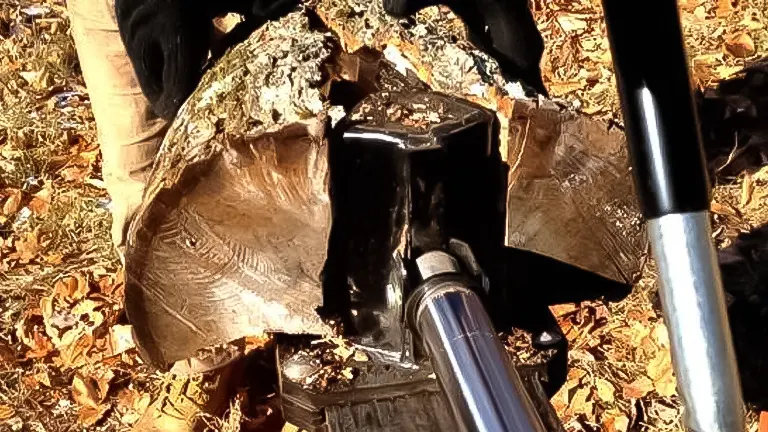
This intriguing article comprehensively records each step of their methodical approach, from the initial setup to the final analysis, presenting a wealth of information that proves invaluable to both experienced woodworkers and those new to the craft.
Through a combination of observation, practical testing, and thoughtful reflection, the team delivers a thorough exploration of the subject, shedding light on the tangible benefits of maintaining a sharp wedge on the overall productivity and effectiveness of log splitting. Their findings are not only based on empirical evidence but are also enriched with expert insights, making the article a critical resource for anyone keen on optimizing their wood-splitting practices.
List of How To Sharpen A Log Splitter Wedge:
Methodology and Findings About Log Splitters Wedge
The experiment is straightforward yet effective. The team uses an Easton made 1222 log splitter with a six-way wedge to split 20 rounds of beech wood into two batches of ten. The first batch is processed with the wedge in its original, unsharpened state, while the second batch undergoes splitting after the wedge is sharpened with a Milwaukee grinder and a flap wheel.
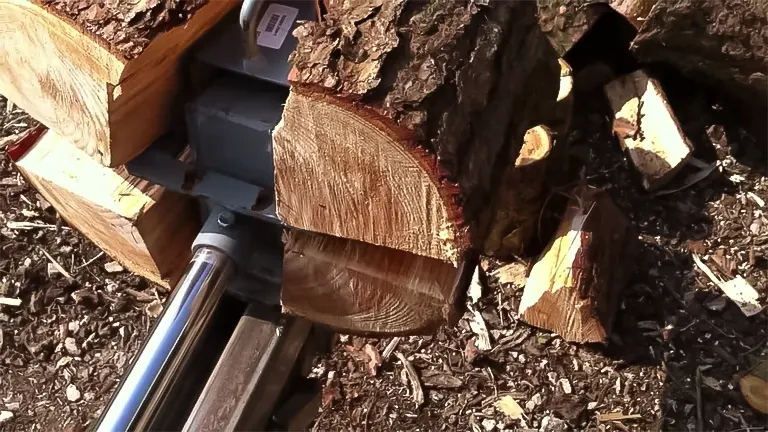
Throughout the experiment, the team records the time taken to split the wood, the number of kickbacks, and the overall ease of splitting. The difference in performance between the unsharpened and sharpened wedge is stark. The sharpened wedge results in significantly faster splitting times, fewer kickbacks, and a cleaner cut through the wood.
This improvement is not only quantifiable through their recorded metrics but also qualitatively visible in the reduced amount of debris produced and the smoother operation of the machine. The article emphasizes that sharpening the wedge not only enhances efficiency but also reduces wear and tear on the machinery, suggesting long-term benefits beyond the immediate improvement in splitting performance.
My Experience With Different Sharpening Methods
Method 1: Hand Filing
Hand filing involves using a large, durable metal file to manually sharpen the edge of a log splitter wedge. This traditional method requires a steady hand and patience, as it involves drawing the file across the wedge’s edge in a consistent, controlled motion to gradually remove metal and create a sharp edge. The process allows for precise control over the amount of material removed, making it easier to maintain the correct angle and edge geometry.

It’s an affordable and accessible method, requiring only the file itself and some elbow grease. However, it’s labor-intensive and time-consuming, especially for wedges that have become very dull or have nicks and imperfections. Hand filing is best suited for those who prefer a hands-on approach to tool maintenance and have the time to dedicate to the task, offering a satisfying sense of craftsmanship and attention to detail.
Pros
- Cost-effective: Requires only a metal file, making it an affordable option.
- Precision: Allows for careful control over the sharpening process.
Cons
- Time-consuming: It’s a slow process, especially if the wedge is significantly dulled.
- Physically demanding: Requires a good deal of elbow grease and can be tiring.
Method 2: Bench Grinder
Utilizing a bench grinder for sharpening a log splitter wedge is a method that combines speed with effectiveness. A bench grinder is a stationary power tool that has two grinding wheels, allowing you to quickly sharpen tools by applying the edge against the rotating wheel. This method significantly reduces the time and effort required to restore a sharp edge compared to manual methods like hand filing.
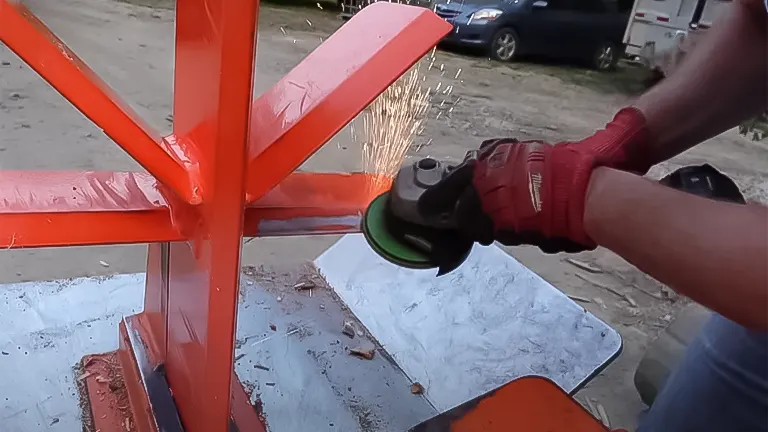
The high-speed rotation of the grinding wheel removes material from the wedge quickly, making it an excellent option for fixing badly worn edges. However, it requires a bit of skill to maintain the correct angle and avoid overheating the metal, which could lead to temper loss and weaken the wedge. Safety precautions, such as wearing eye protection and maintaining a firm grip, are essential.
The bench grinder is ideal for those looking for a fast, efficient way to sharpen their tools, provided they are comfortable with the necessary safety measures and attentive to the tool’s condition throughout the process.
Pros
- Speed: Much faster than hand filing, taking only a few minutes to achieve a sharp edge.
- Efficiency: Removes material quickly, making it ideal for fixing badly worn wedges.
Cons
- Risk of overheating: If not careful, it can overheat the metal, potentially weakening the wedge.
- Less control: It’s easier to remove too much material or alter the angle of the edge.
Method 3: Angle Grinder with Flap Disc
The use of an angle grinder equipped with a flap disc represents a versatile and efficient method for sharpening log splitter wedges. This technique blends the speed of power tools with enhanced control over the sharpening process. An angle grinder is a portable power tool that, when fitted with a flap disc—a disc made up of overlapping abrasive “flaps”—allows for more nuanced material removal and surface finishing.
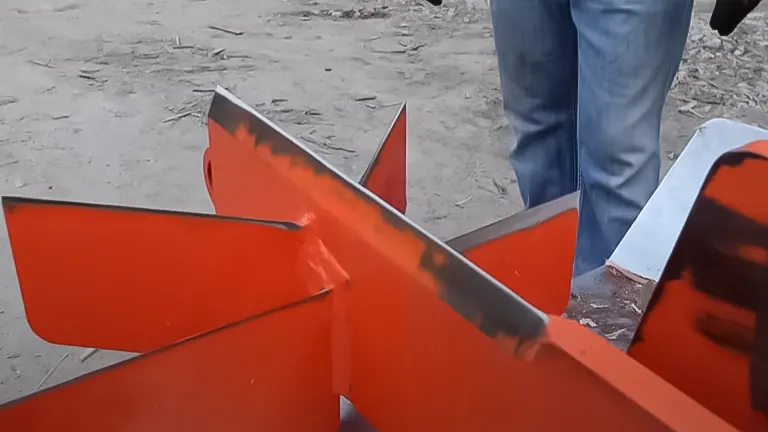
This setup provides the user with the ability to adjust the level of abrasiveness by selecting discs of different grit sizes, facilitating both the rapid removal of dulled or damaged metal and the fine-tuning of the edge to a sharp finish. It combines the aggressive material removal capacity of a bench grinder with a level of control closer to hand filing.
However, using an angle grinder for this purpose requires a steady hand to maintain the correct edge angle and a cautious approach to prevent accidental damage to the wedge. It’s an excellent choice for those who value efficiency and control and are familiar with handling power tools safely.
Pros
- Versatility: Allows for adjusting the amount of material removed by changing the disc’s grit.
- Control and speed: Faster than hand filing but offers more control than a bench grinder.
Cons
- Skill required: Needs a steady hand and experience to maintain the correct angle.
- Safety: The power tool requires proper safety gear and precautions.
Method 4: Professional Sharpening
Opting for professional sharpening services to maintain the edge of a log splitter wedge offers the highest level of precision and expertise. Professionals use specialized equipment, such as industrial-grade belt sanders, water-cooled grinding systems, and fine honing tools, to achieve a consistently sharp edge with the correct angle and minimal risk of overheating or damaging the metal.
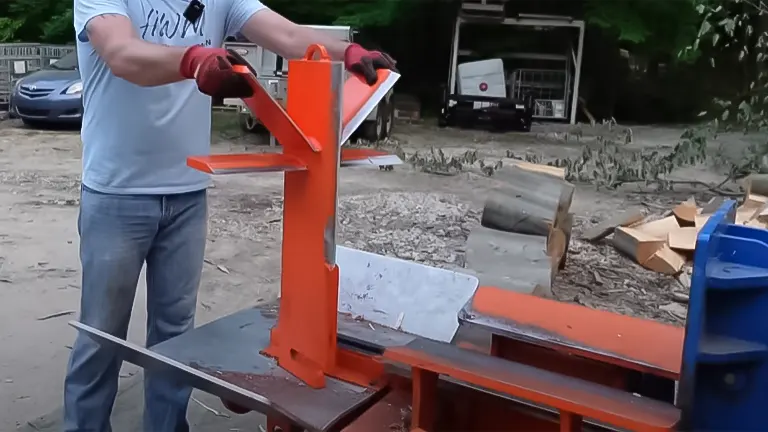
This method relieves the tool owner of the burden of sharpening, ensuring that the wedge is maintained to the highest standards. It’s particularly beneficial for those who use their log splitter extensively and require a perfectly sharp edge for efficiency and safety.
While this option comes with a cost, which may vary depending on the service provider and the condition of the wedge, it guarantees a professional finish and extends the life of the tool. For individuals who prioritize optimal performance and convenience over the cost, professional sharpening is an investment in the longevity and effectiveness of their log splitting equipment.
Pros
- Expertise: Ensures a correctly sharpened edge with the right angle.
- Convenience: No effort required on your part aside from taking the wedge to the professional.
Cons
- Cost: More expensive than DIY methods, especially if sharpening is needed frequently.
- Turnaround time: You might be without your tool for a few days depending on the service provider.
Making the Choice
Choosing the right sharpening method depends on several factors: the condition of your wedge, how often you use it, your budget, and whether you prefer doing the maintenance work yourself. For those who enjoy the DIY aspect and have the time, hand filing or using an angle grinder can be satisfying and effective. However, if you’re looking for the best possible edge with minimal hassle, professional sharpening is unbeatable, provided you’re willing to bear the cost and wait.
My Recommendation
Based on my experiences, for regular maintenance, I recommend the angle grinder with a flap disc approach. It offers a good balance of control, efficiency, and cost, especially for those familiar with power tools. For wedges that are significantly worn or for those who prioritize convenience and optimal results, professional sharpening is the way to go.
Final Concluding Thoughts
In conclusion, keeping your log splitter wedge sharp is key to efficient and safe wood splitting. While there are multiple methods to achieve a sharp edge, the best choice varies based on individual preferences and circumstances. Through my journey, I’ve found that understanding the pros and cons of each method is crucial in making an informed decision that suits your specific needs.
Frequently Asked Questions
- Why is it important to keep a log splitter wedge sharp?
Keeping your log splitter wedge sharp is crucial for maintaining efficiency and safety in splitting logs. A sharp wedge can easily penetrate and split wood, reducing the effort and time required for the task. It also minimizes the risk of the wedge getting stuck or bouncing off the log, which can be dangerous. - Can I sharpen a log splitter wedge myself, or should I hire a professional?
Yes, you can sharpen a log splitter wedge yourself using methods like hand filing, using a bench grinder, or an angle grinder with a flap disc. Each method requires different levels of skill and equipment. However, for those seeking the best possible edge with minimal effort, professional sharpening is recommended. - How often should I sharpen my log splitter wedge?
The frequency depends on how often you use your log splitter and the type of wood you’re splitting. As a general rule, inspect the wedge for dullness or damage before each use, and sharpen it whenever you notice it’s not cutting as efficiently as before. - What safety precautions should I take when sharpening my wedge?
Always wear protective gear, including safety glasses and gloves. Ensure that the wedge is securely clamped down when using power tools, and be mindful of the sparks and metal filings. Read and follow the safety instructions for any tools you use. - What’s the best angle to sharpen a log splitter wedge?
The ideal angle for a log splitter wedge is typically between 25° and 30°. This angle provides a good balance between sharpness and durability. However, you should also consider the manufacturer’s recommendations for your specific wedge. - How do I know when the wedge is sharp enough?
A well-sharpened wedge should have a consistent, smooth edge without any nicks or dull spots. You can test its sharpness by carefully feeling the edge with your fingers (wearing gloves) or trying to cut into a piece of softwood. - Is it possible to over-sharpen a log splitter wedge?
Yes, excessively sharpening the wedge can make it too thin, weakening the edge and making it prone to chipping or breaking. It’s important to remove just enough material to restore sharpness without compromising the wedge’s strength. - Can using a bench grinder to sharpen the wedge weaken it?
If not done correctly, using a bench grinder can overheat the metal, potentially weakening it by altering its temper. To avoid this, take frequent breaks to let the metal cool down and use a light touch. - What are the signs that my log splitter wedge needs sharpening?
Signs include difficulty penetrating the wood, the wedge getting stuck more often, or visible nicks and dullness on the edge. Regular inspection will help you determine when sharpening is needed. - Are there any specific maintenance tips for keeping the wedge sharp longer?
After each use, clean the wedge to remove sap and debris, which can corrode the metal. Store it in a dry place to prevent rusting. Also, avoid splitting dirty or sandy logs, as they can quickly dull the edge.
Your Feedback Matters! We invite you to share your personal experiences and insights on sharpening log splitter wedges, especially if you’ve tried any of the methods discussed in our head-to-head comparison. Your valuable input could guide fellow enthusiasts in choosing the best sharpening technique for their needs. Let’s help each other make informed decisions and keep our tools in peak condition. Comment below with your stories, tips, and advice!

Edward Smith
Forestry AuthorWoodworking is about more than crafting; it's a harmonious connection with nature, mastering tools, and preserving our environment. I'm here to share my knowledge and experiences with you, forging a future where we can embrace wood's beauty and utility while safeguarding our forests' health and diversity.
2 comments
Thank u for your advice, yes keeping wedge sharp at all time, it makes the splitting so much easier, I have a electric splitter from casa Depot for now 6 years, still working great, it's cleaned after each use j,g,












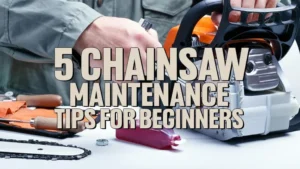
I noticed that the hydraulic mechanism started getting tired & didn’t retract even if clean & greased/siliconed.
Cynthia Smith
September 2, 2024 2:59 pm